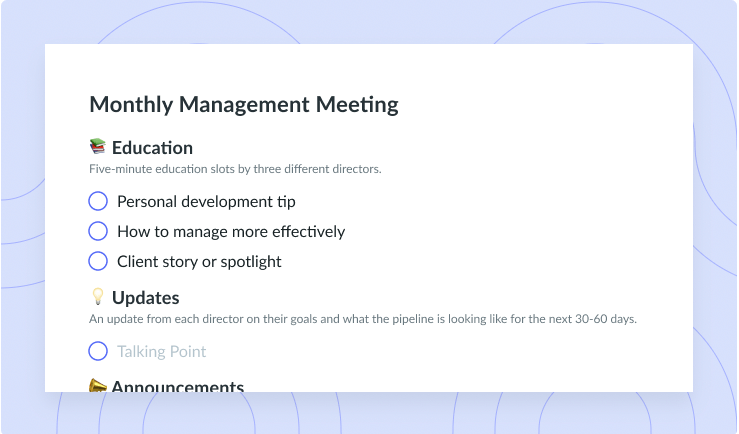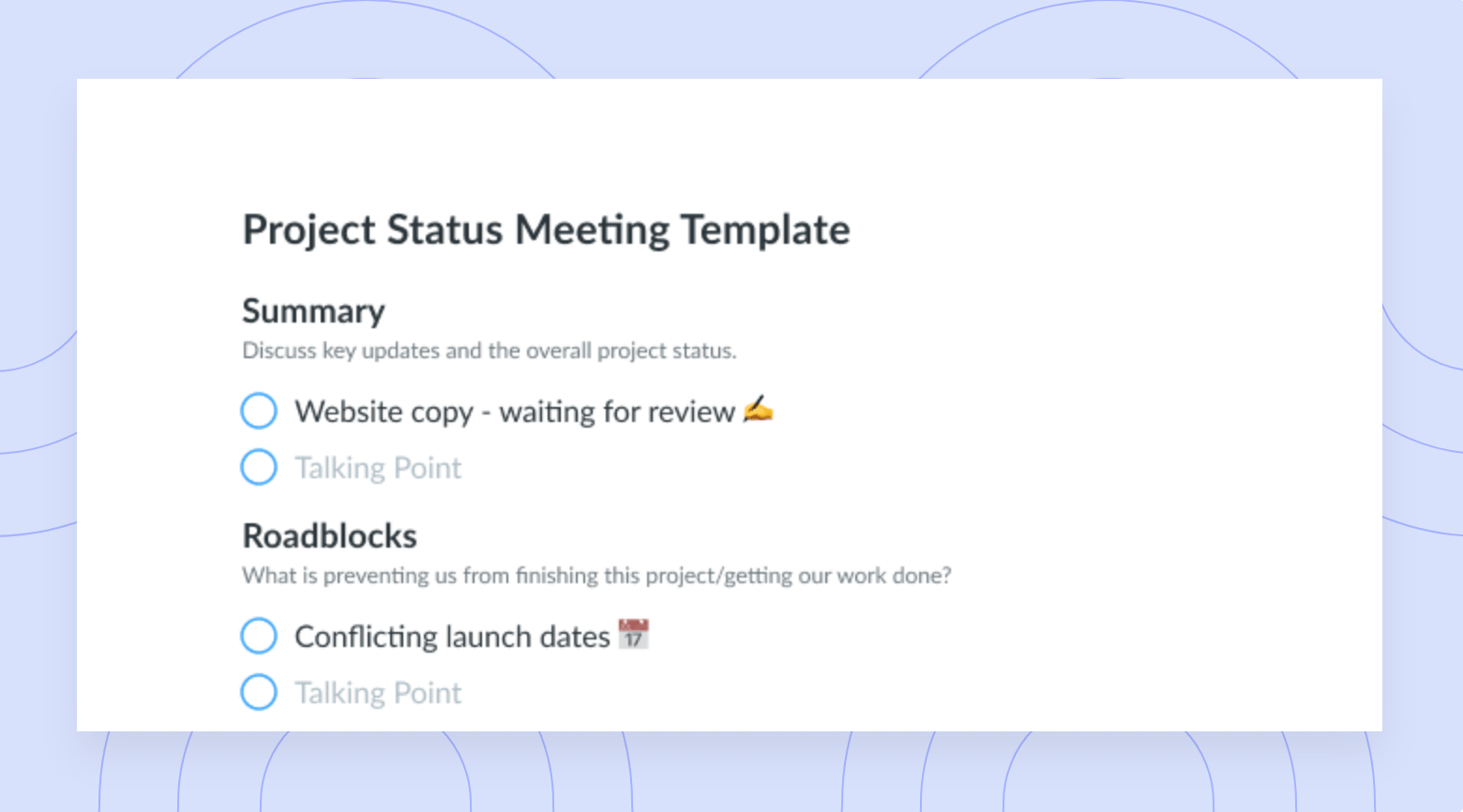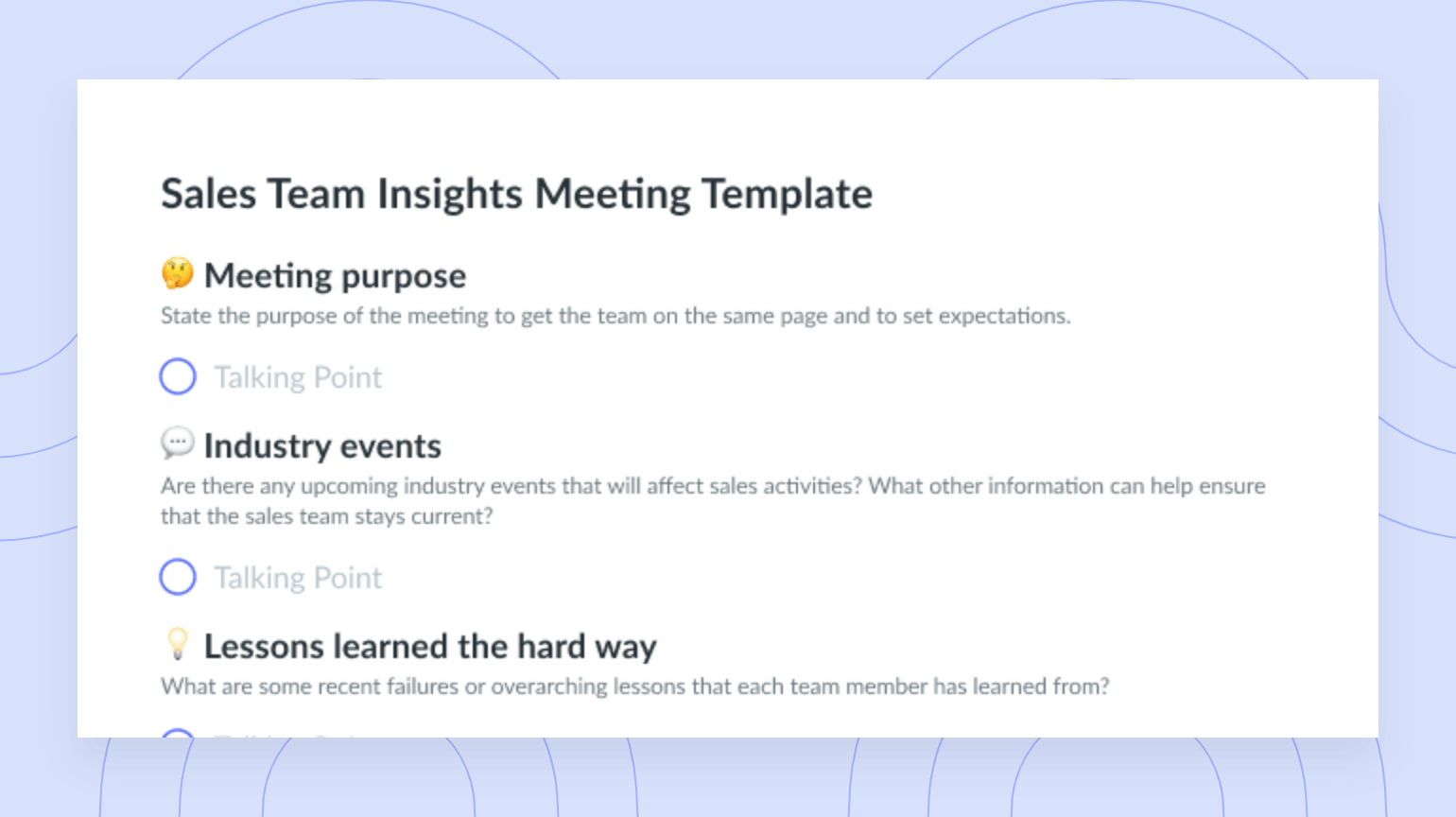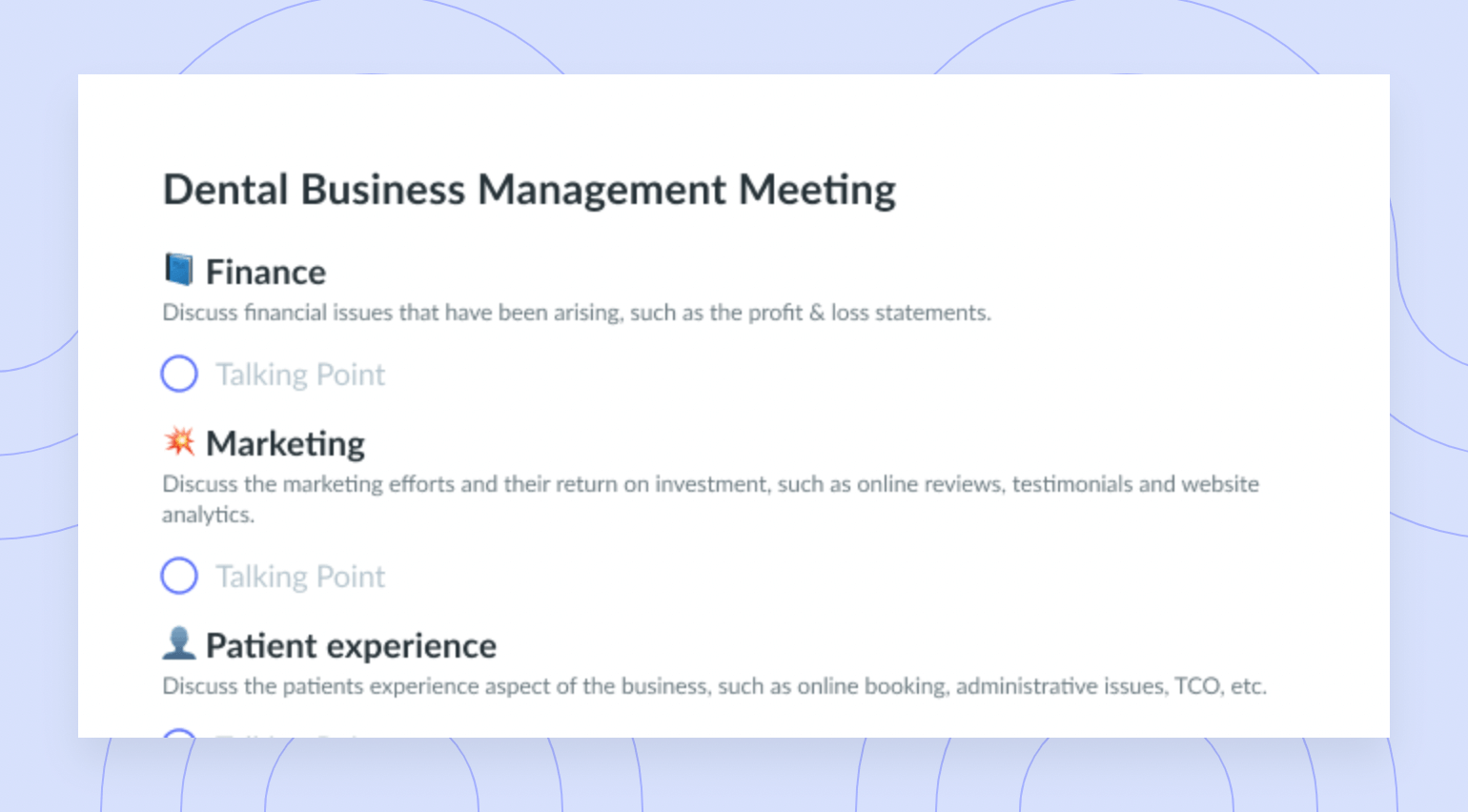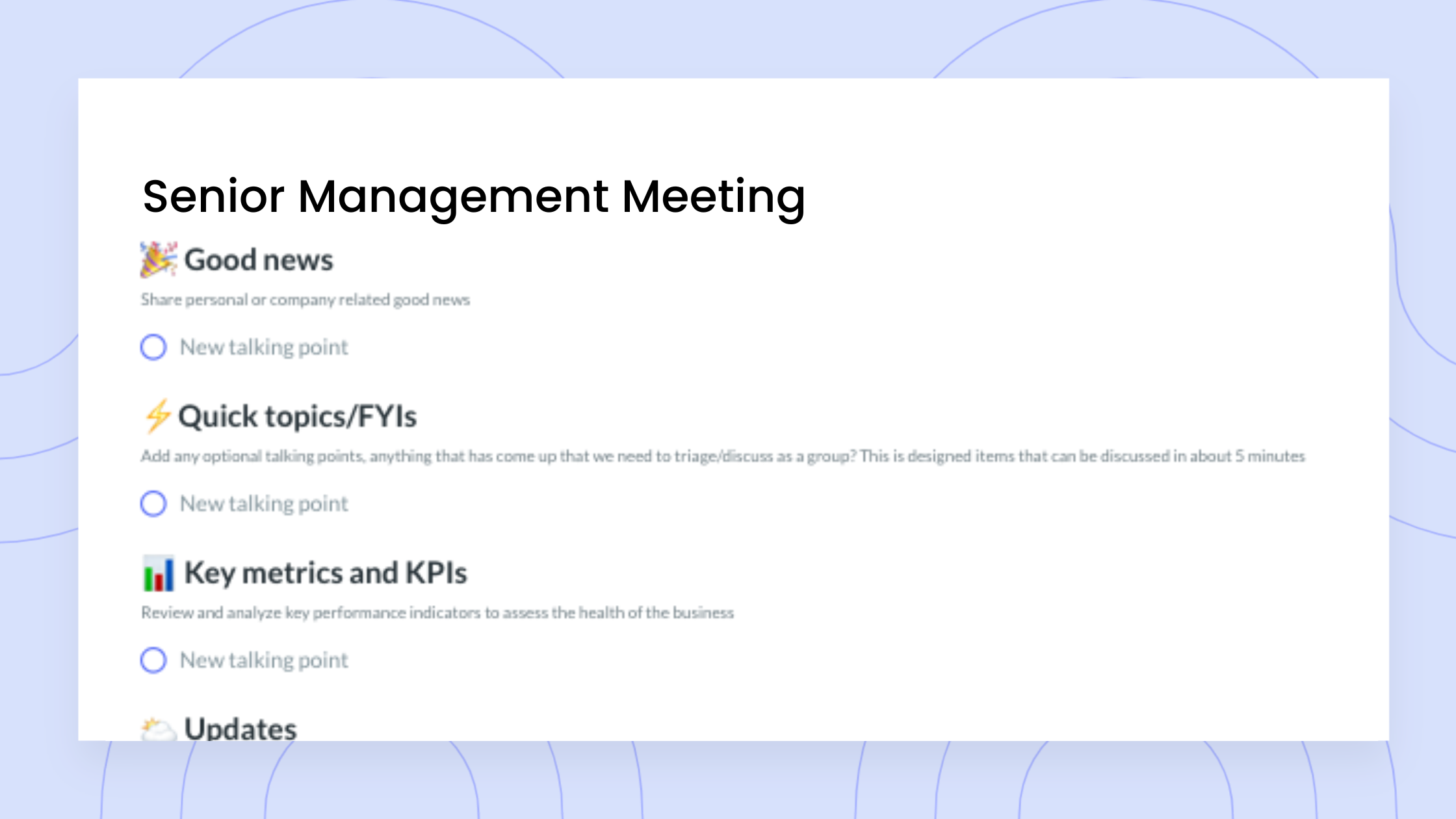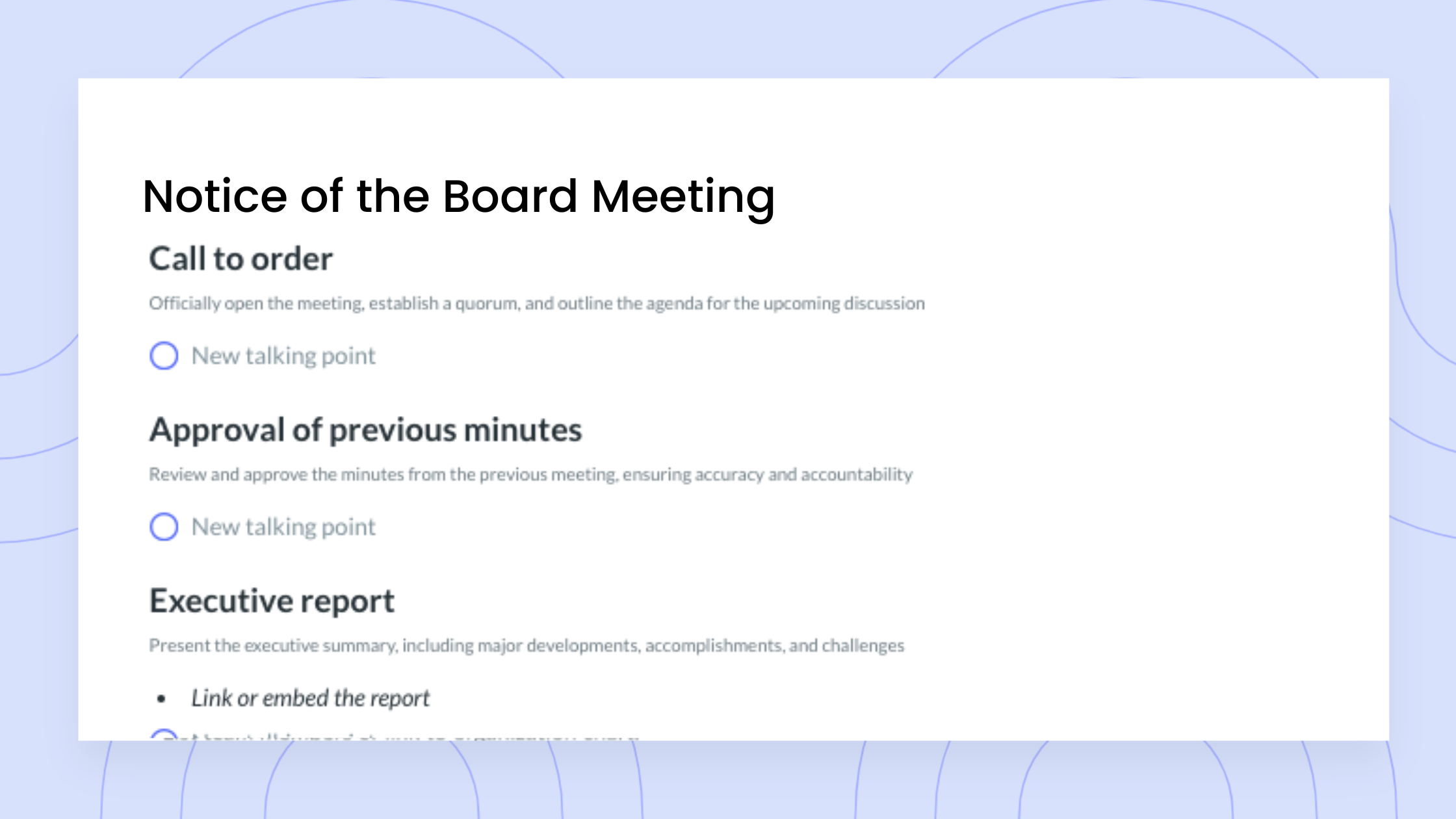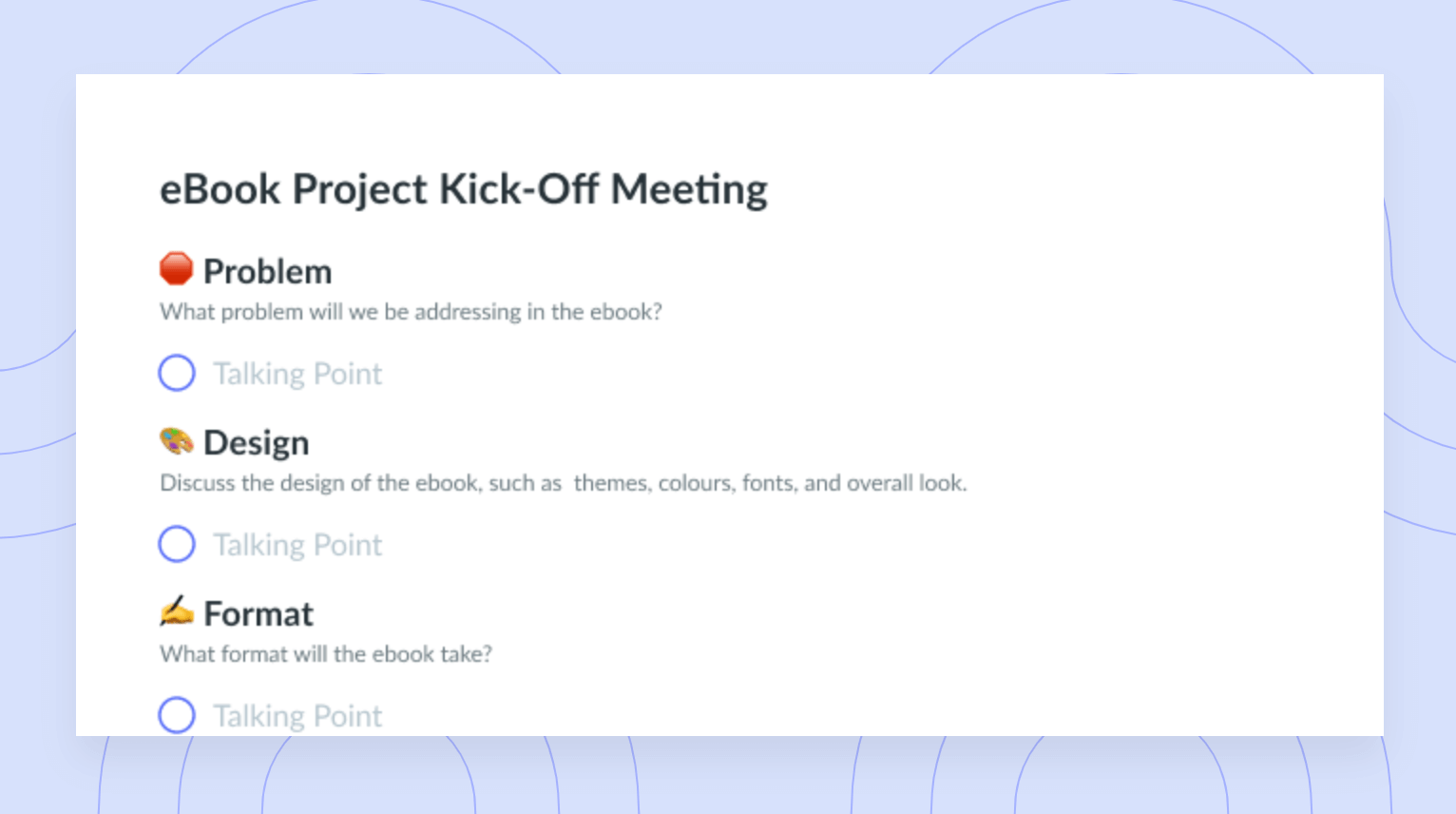What is Tracking in Project Management?
Learn the basics and best practices of project tracking for a more efficient project management process here!
They say the devil is in the details, and this is especially true when it comes to project management. Project tracking is an essential component of project management for making sure key details don’t slip through the cracks. Read ahead for a guide on tips and tools for tracking in project management, and to learn why this is so important for project success.
- Understanding the importance of project tracking
- Project tracking methods
- Best practices for tracking project progress
- Using technology to enhance project tracking
- Proactively identifying and addressing project risks
- Enhancing team collaboration and communication
Understanding the importance of project tracking
Here’s a rundown of the basics for project tracking.
- What is project tracking?
- Key components of effective project tracking
- Benefits of accurate project tracking
1What is project tracking?
Project tracking is the process of monitoring a project’s progress. If project management is guiding a project to its end goal, project tracking dives into the nitty-gritty of how to get there.
In addition to project deadlines, project tracking also covers resources and efficiency, both in terms of time and money. There are a variety of methods for tracking your project — the right choice depends on what metrics are most relevant to you.
2Key components of effective project tracking
No matter how you decide to track your project, it’s important to cover the following aspects.
- Timely updates. Review real-time updates on all tasks as you track project progress.
- Clearly defined metrics. You can use qualitative or quantitative measurements to figure out how far along your team has gotten.
- Team check-ins. Strong group communication is essential to a successful project. Team updates should be built into your project tracking process to prevent siloing.
3Benefits of accurate project tracking
Project management tracking has numerous advantages.
- Staying on time. Project tracking can keep you honest about meeting your projected completion date.
- Controlling spending. Project tracking is a great way to make sure you’re not in danger of going over budget.
- Determining true ROI. This reveals whether you and your team are getting the most out of the time and resources you’re putting into each project.
- Adjusting as needed. Project tracking is a great way to realize you need to course-correct well before staying the course would become a problem.

Streamline project management
Assign meeting action items, track progress with OKRs, and encourage peer feedback for seamless future projects with Fellow. Try Fellow for free today!
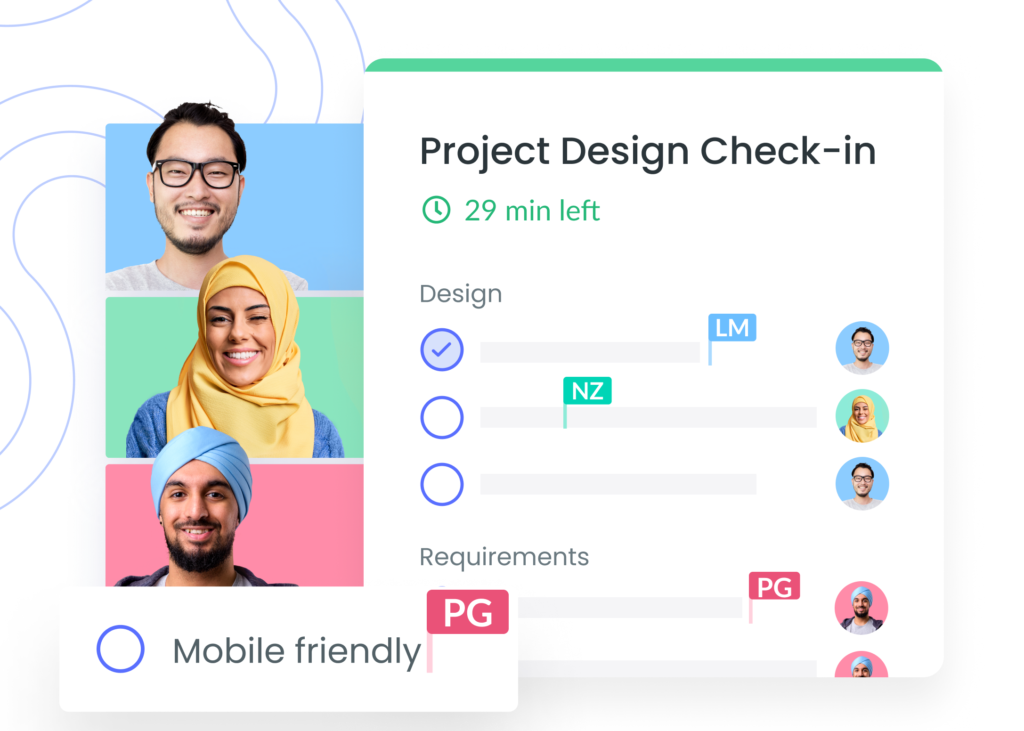
Project tracking methods
If you’re new to project tracking, here are a few approaches to choose from.
1Milestone timelines
If timeliness is your highest priority, this project tracking method might be the way to go. You’ll break up your larger project goals into smaller tasks to set timeline benchmarks for your team. You can use visualization tools such as a Gantt chart.
2Recurring status update meetings
Your team should meet regularly so that everyone stays updated on everyone else’s progress. If any team member is unclear on their responsibilities, these meetings will give them the chance to clarify and ask questions.
3Reporting tools
Your project management team can also integrate project status reports into their workflows. This can include setting up timesheets for team members and managers to note how much time is going into each task.
You can also use more advanced technology to set up tracking reports based on your goals. With Fellow, you can create and track effective OKRs to manage your projects.
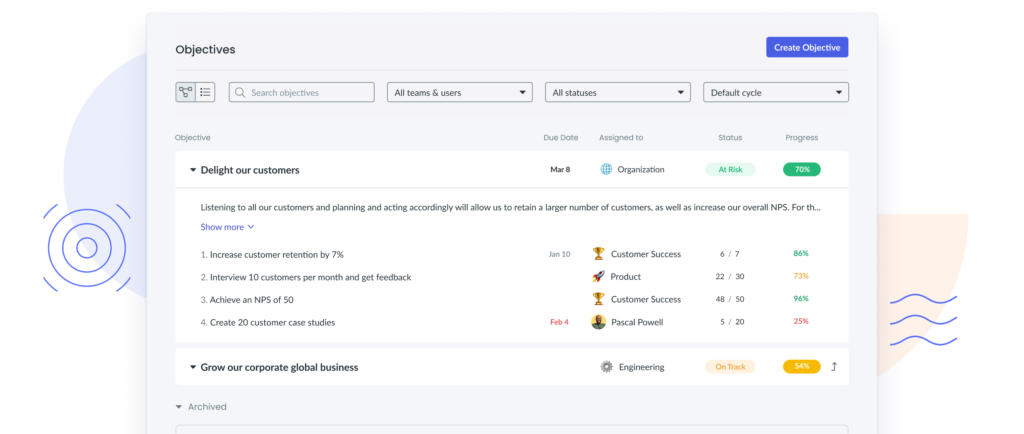
Best practices for tracking project progress
Here are some tips for getting the most out of tracking in project management.
- Set clear project goals and objectives
- Define project milestones and deliverables
- Establish baselines and project schedules
- Monitor progress and identify issues
1Set clear project goals and objectives
Before drawing the map, you have to be sure of your destination. You can plainly define your larger goals with measurable OKRs or KPIs at the start of your project planning. After you get a clear vision of the big picture, you can start to break down your project into smaller subtasks and phases.
2Define project milestones and deliverables
Once you’ve outlined your end goals, you can work on setting some benchmarks for each project stage. These are the goals your project management team will use as a tracking guide to set up reports and a project timeline.
This is also when you’ll assign tasks to each of your team members. Make sure your team is clear on what they’re responsible for delivering. This way, there will be few, if any, surprises when you check in on everyone’s task list later.
3Establish baselines and project schedules
After you’ve set all your goals, you can plug everything into your timeline. Try planning a schedule that allows you plenty of time to reflect before and after each project phase. Your schedule should also include internal touchpoints such as team meetings, as well as frequent client check-ins.
4Monitor progress and identify issues
Team check-ins and regular reporting should help you pinpoint any challenges or roadblocks. If any team members are having trouble meeting their goals on time, it may be time to reevaluate your team’s bandwidth.
Another good way to determine how your progress is going is to seek client feedback. If they’re happy with your project’s progress, that’s a good sign that you’re on the right track.
Using technology to enhance project tracking
Project tracking doesn’t have to be a huge lift for your team. Automated technology and project tracking tools can help streamline the process.
- Project management software and dashboards
- Time tracking and resource allocation tools
- Collaboration and communication platforms
- Integrating project tracking with other business systems
1Project management software and dashboards
Project management software platforms are equipped with all the tools you need to set clear, measurable goals and track them at each stage. This can include reporting features as well as project timeline visualization tools such as kanban boards.
Try out Fellow’s free kanban template:
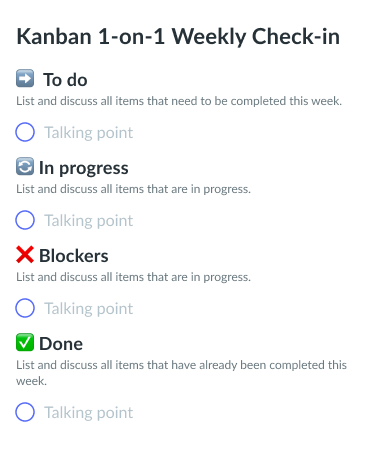
2Time tracking and resource allocation tools
Some project management software platforms include a time entry feature so team members can log exactly how much time they spend on a deliverable. This is helpful for future projects too since you’ll have a more accurate idea of how much time a task actually takes. You might also want to use project management software platforms that feature budget-tracking tools. This way, you avoid overspending on your project.
3Collaboration and communication platforms
Real-time team communication plays a huge role in keeping everything running smoothly. Most project management software platforms will let you add comments when you need to touch base with your team or mark a task complete.
4Integrating project tracking with other business systems
Many project management software platforms connect with your existing technology to further streamline your tracking. For example, you may be able to connect to your project management platform with your CRM for easier client tracking. Many project management software platforms integrate with common messaging platforms so that you can turn conversations into projects in just a few clicks.
Proactively identifying and addressing project risks
Project tracking is great for spotting issues, but you may be wondering what that looks like in practice. It starts with defining potential project risks at the beginning so that you know what to watch for as you keep going. There are different risk categories that can guide you in this process, such as legal, strategic, or operational risks. There are plenty of techniques for pinpointing risks, such as a SWOT analysis (strengths, weaknesses, opportunities, threats) of your objectives.
It’s also important for your project management team to get all stakeholders’ and leaders’ input on risks. For example, if your organization is creating a tech product, your developers and operations team need to be in the room from the beginning.
Even with the most careful planning, challenges and risks may arise mid-project. Different strategies can help you cope. For instance, you can transfer some of your risk management to a third party, such as an insurance company. Your project management team can also try to reduce the risk of overspending through additional budget management steps.
This will take practice over time, and that’s okay. The more your project team works on a risk management strategy, the easier it will be to duplicate in future projects.
Enhancing team collaboration and communication
As they say, teamwork makes the dream work, and this is especially true in project management. Here are some tips on how to simplify your team’s cooperation for smooth project tracking.
- Make regular status updates and meetings a priority
- Share progress and updates with stakeholders
- Ensure effective communication across teams and departments
1Make regular status updates and meetings a priority
You should set a recurring meeting schedule that makes sense for your team and project timeline. That said, you may need to adjust this schedule as you get closer to the deadline. For example, you may have to change weekly check-ins to daily check-ins as you get closer to the end.
While regular team meetings are essential for project execution, it’s important to make sure they get to the point quickly. You want to use everyone’s time wisely so that they can get back to their task list. Try creating a focused agenda so that you can run a successful project management meeting.
2Share progress and updates with stakeholders
During your initial client onboarding, make all your expectations clear, including how often clients can expect to receive updates. Whether you decide to hold client meetings on a regular basis or send updates via email, give your client space to share their thoughts. They’re the ones who need to be happiest with the results.
3Ensure effective communication across teams and departments
Regular meetings will certainly help with transparency if you have multiple teams collaborating on a project. High-quality project management software with ample communication features is also essential. This way, teams can view everyone’s progress and get updates between meetings. Combining both software and meetings is a great way to make sure everyone’s in agreement.
Stay on track with Fellow
Accurate tracking in project management is key to success. There are a variety of tools that can help your project team stay on top of the many details it takes to complete a project.
Fellow has everything you need for successful project-tracking meetings and goal-setting. From tools to plan and host collaborative meetings to technology for tracking meeting action items, Fellow can help you track projects from start to finish. Explore Fellow today to start — and keep — your next project on the right track.
Key takeaways
- Project tracking keeps you on time and on budget while enabling you to find and counter potential risks or challenges.
- Project management software can help automate and streamline many of the tasks associated with project tracking.
- Transparent team communication is one of the most important factors for accurate project tracking.









